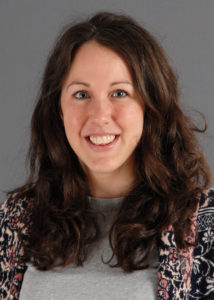Laura Carter is a University Academic Fellow at the University of Leeds, UK. Laura’s research focuses on understanding the fate and uptake of emerging contaminants in the natural environment, with particular focus on soil-plant systems. Since completing her PhD at The University of York, Laura has spent time as a Risk Assessor at Unilever’s Safety and Environmental Assurance Centre (SEAC) and as a Postdoctoral Research Fellow at the Commonwealth Scientific Industrial Research Organisation (CSIRO) in Adelaide, Australia where she investigated the biological effects of pharmaceutical uptake into plants. From 2016 – 2018 Laura worked as a Postdoctoral Researcher at the University of York, UK where she contributed to the European iPiE project on the intelligent assessment of pharmaceuticals in the environment, developing soil sorption models and monitoring pharmaceuticals in river catchments. At the University of Leeds, Laura is currently working on projects to increase our understanding of the effects of pharmaceuticals on soil and plant health.
Read Laura’s Emerging Investigator article “Towards a framework for establishing the impacts of pharmaceuticals in wastewater irrigation systems on agro-ecosystems and human health” and find out more about her in the interview below:
Your recent Emerging Investigator Series paper focuses on the impacts of pharmaceuticals in wastewater irrigation systems on agro-ecosystems and human health. How has your research evolved from your first article to this most recent article?
The first publication from my PhD centred on exploring the role of chemical fate in the uptake of pharmaceuticals by plants. This involved pot experiments to consider the sorption, persistence and bioavailability of pharmaceuticals in soil systems and the influence of this on plant uptake. My research then moved on to explore the factors and processes, which control the fate and uptake of pharmaceuticals in terrestrial systems including the potential for pharmaceuticals to induce sub-lethal toxicity. Our recently published article takes a more holistic approach to considering pharmaceutical exposure in agro-ecosystems accounting for the complexity and connectivity between different sources and receptors. The proposed framework allows us to begin to piece together individual research outputs to quantify the agricultural and human health risks associated with pharmaceutical exposure in agro-ecosystems.
What aspect of your work are you most excited about at the moment?
I have recently started at the University of Leeds as a University Academic Fellow. I am excited about the opportunity to develop my own research group and an independent programme of research centred on exploring the fate and uptake of contaminants in terrestrial systems.
In your opinion, what are the most important questions to be asked/answered in this field of research?
As highlighted in our recent publication we are unable to currently assess the risk of pharmaceuticals in agro-ecosystems because we do not have a high level of understanding of many of the processes and compartments involved in the exposure of pharmaceuticals. Work is urgently needed to understand the fate and transport of pharmaceuticals in arable soils systems and the effects of chronic, low level exposure to these substances on microbes, invertebrates, plants, wildlife and humans. In addition, research pertaining to the fate, uptake and effects of pharmaceutical mixtures and metabolites is lacking.
Ultimately, it is not feasible to experimentally determine all the data we need to fill the identified knowledge gaps, so a key focus is the need to develop and validate models to predict the uptake of pharmaceuticals by non-target organisms. This will enable us to have a better understanding of the exposure of pharmaceuticals in terrestrial systems and provide basis for understanding any potential risk.
What do you find most challenging about your research?
I find translating results from laboratory experiments to understand the impacts of pharmaceuticals in our natural environment a particularly challenging aspect about my research. This is an inherently complex topic and trying to account for the complexity of environmental matrices across spatial and temporal scales, such as differences in soil properties, makes for a significant, yet interesting, challenge.
In which upcoming conferences or events may our readers meet you?
I will be attending the 2019 Society of Toxicology and Environmental Chemistry (SETAC) conference in Helsinki where I will be presenting some recent work on the potential for pharmaceutical translocation to beehives.
How do you spend your spare time?
I love to spend my spare time exploring new places with my family; this usually involves a lot of ice cream and trying to keep up with my two-year-old son.
Which profession would you choose if you were not a scientist?
I am a naturally inquisitive person and wanted to pursue a career in journalism when I was at school but this soon changed to a passion to pursue a career in science.
Can you share one piece of career-related advice or wisdom with other early career scientists?
Pursue opportunities for multi-disciplinary collaboration to facilitate the sharing of expertise across complementary subject areas. This enables you to develop novel and interesting hypotheses. Some of my most interesting research has involved collaborating with plant biologists, analytical chemists and mathematical modellers.











